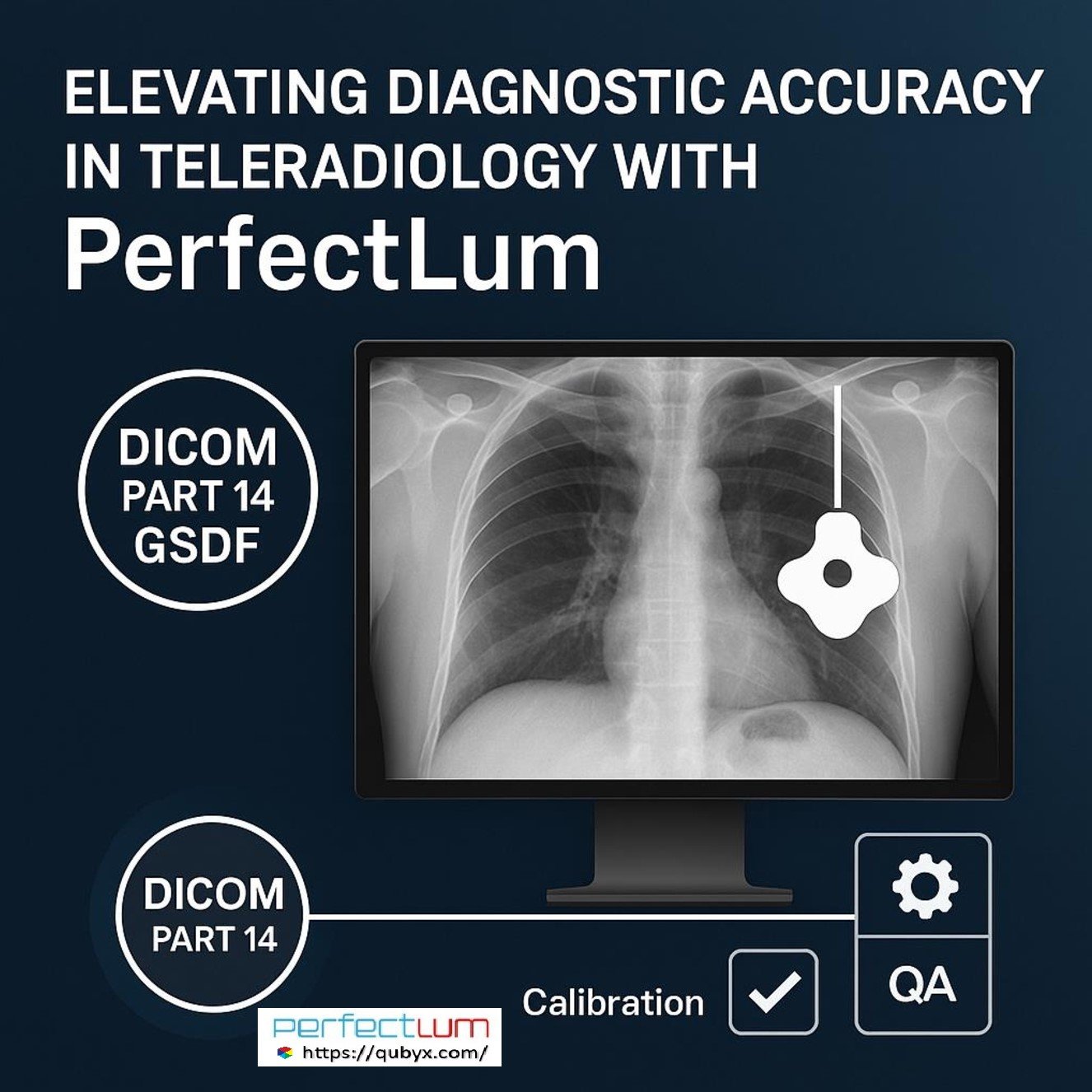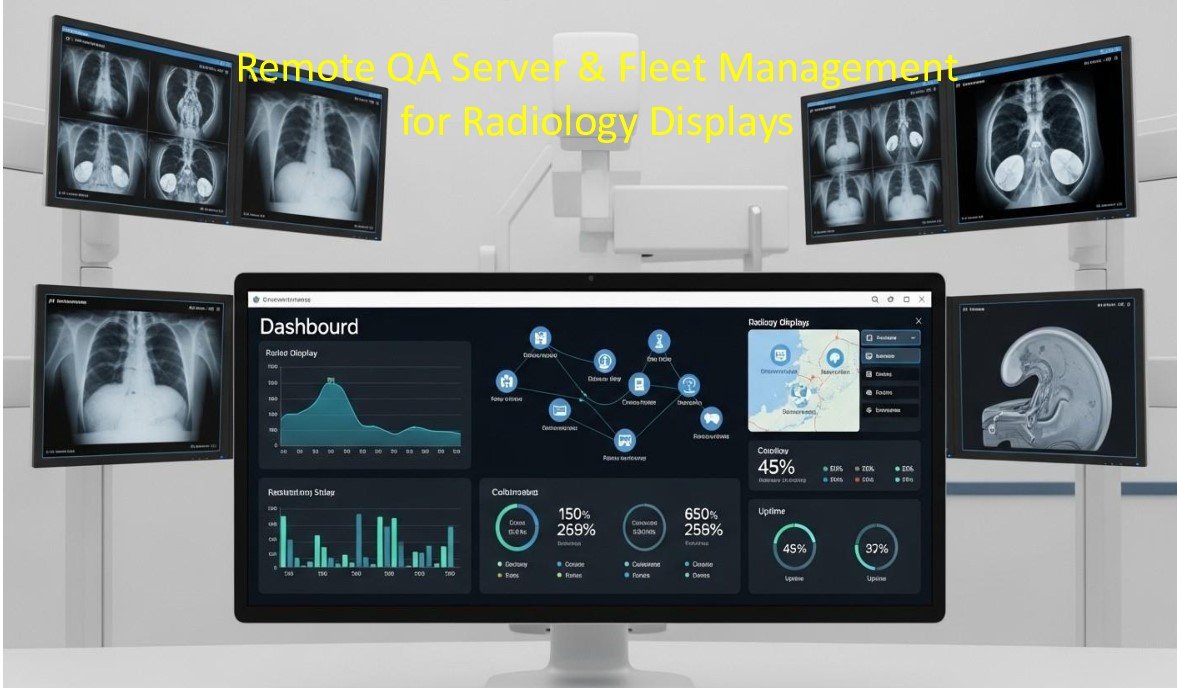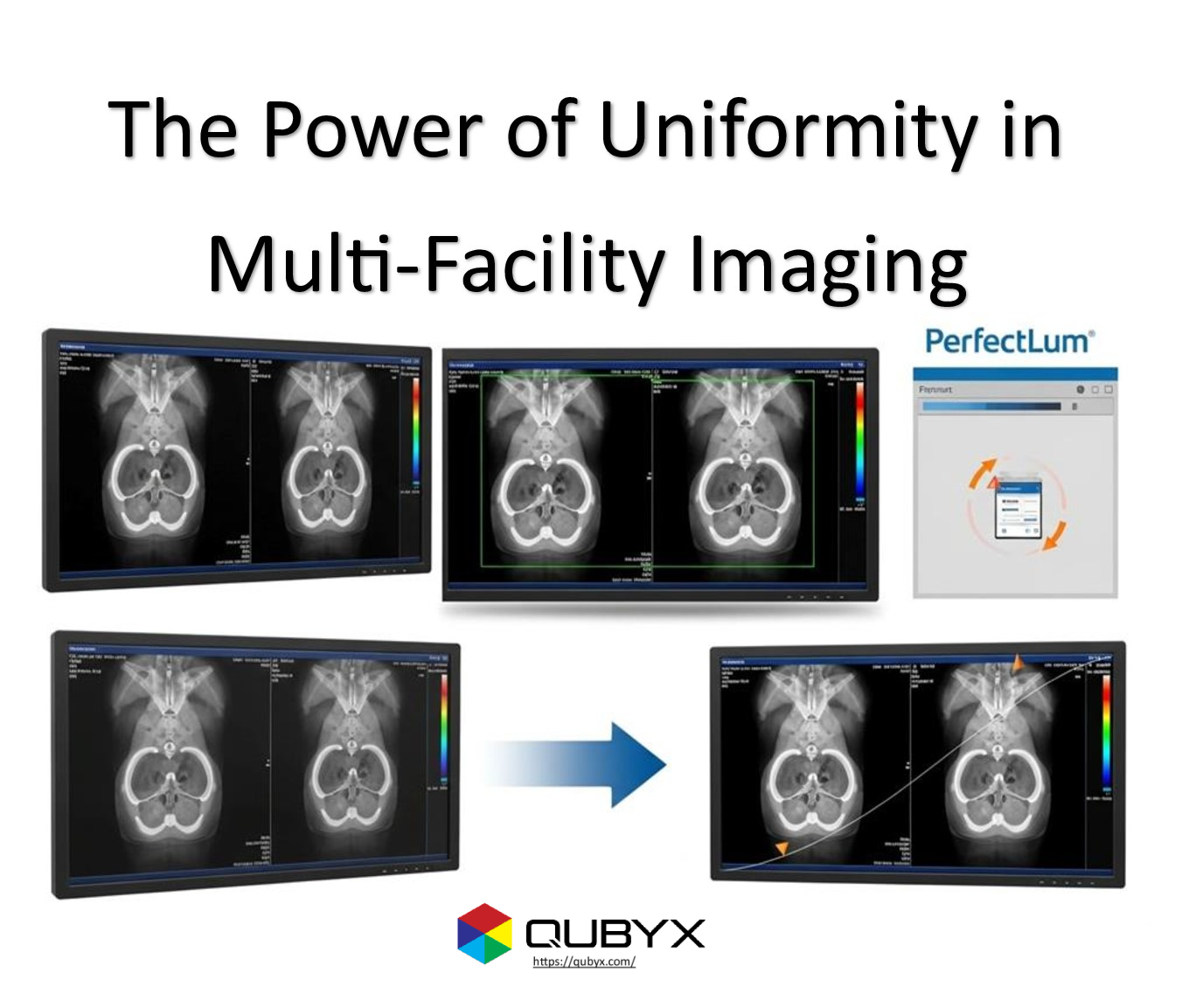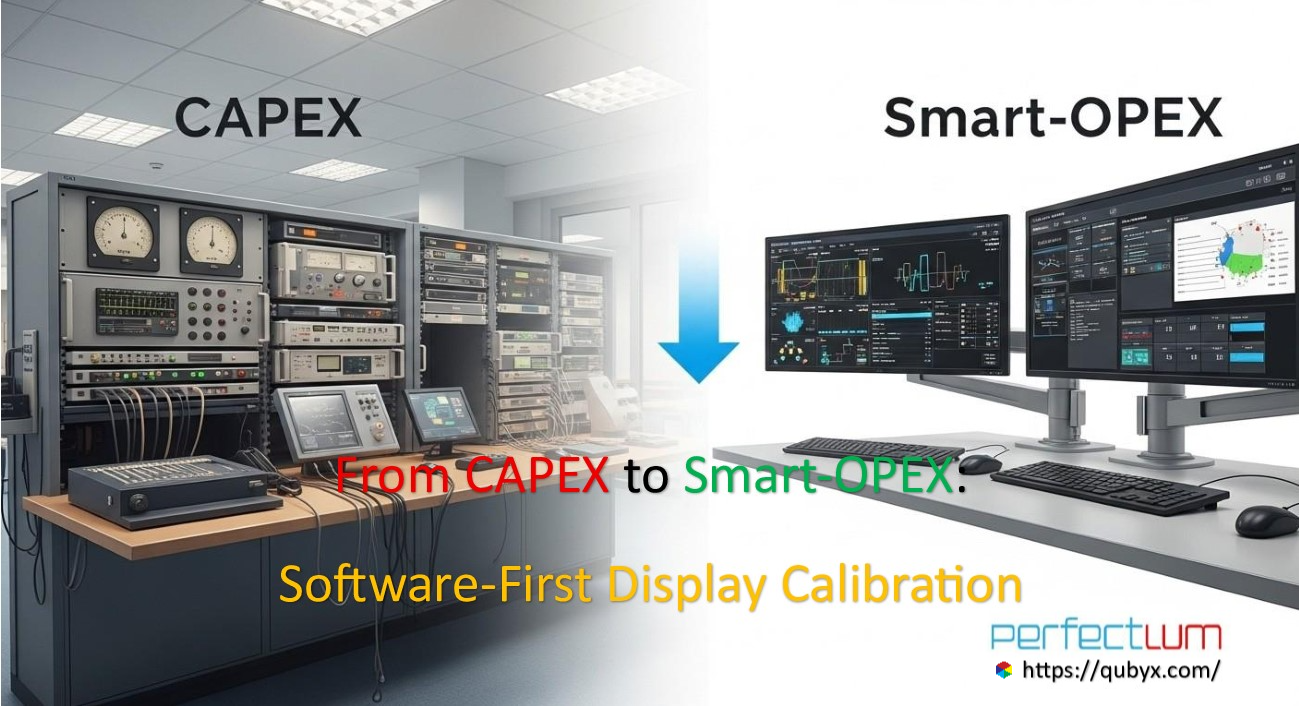News
- Home
- Enrich Diagnostic Accuracy in Teleradiology with PerfectLum

Enrich Diagnostic Accuracy in Teleradiology with PerfectLum
- September 8, 2025
- Shamsul
Enrich Diagnostic Accuracy in Teleradiology with PerfectLum
Teleradiology has matured from an after-hours contingency into a 24/7, globally distributed service line. Yet one truth hasn’t changed, diagnostic accuracy lives or dies on image fidelity. When radiologists read from home offices, satellite clinics, and on-call hubs—often across varied monitors, luminance conditions, and networks—minimizing variability is essential. That’s where PerfectLum helps turn standards into routine practice, aligning remote image Diagnostic Accuracy interpretation with the same rigor as in-hospital reading rooms.
Why Teleradiology Needs Rigor Beyond the PACS
Even with pristine acquisition and lossless routing, your final common pathway is the display—and the room it sits in. If a monitor’s grayscale response and luminance drift from the DICOM Part 14 GSDF, subtle findings (edema margins, faint pneumothorax lines, microcalcifications) can be harder to perceive. Add non-ideal ambient light, uncalibrated color, and uneven QA discipline across sites, and inter-reader variability creeps in. The result: delayed follow-up recommendations, inconsistent secondary reads, and preventable addenda.
Goal: make every workstation—central or remote—behave like a calibrated, standards-aligned Diagnostic Accuracy device with verifiable QA.
DICOM Part 14, Simply Explained
DICOM Part 14 defines the Grayscale Standard Display Function (GSDF) so that equal steps in pixel values produce perceptually equal changes in brightness. Human vision is far more sensitive in darker ranges than brighter ones; GSDF compensates for this, standardizing how subtle contrast appears across devices. When your remote monitor follows GSDF, the same lung nodule looks the same in USA, London, HongKong or Kansas City—assuming equal Diagnostic Accuracy viewing conditions.
Translation for practice: GSDF adherence reduces “monitor personality” and helps radiologists trust low-contrast detail in any reading environment.
PerfectLum Diagnostic Accuracy: Turning Standards into Daily Practice
PerfectLum operationalizes calibration and QA so teams don’t depend on ad-hoc, manual routines.
What it brings:
- Medical display calibration to the DICOM Part 14 GSDF (and color calibration where relevant), with target luminance, gamma, and white point profiles appropriate for modality and room class.
- Acceptance & constancy testing aligned with major guidelines (e.g., AAPM TG18/TG270, DIN 6868-157, NYC PDM, MQSA/ACR contexts) to help satisfy institutional and regional requirements.
- Remote QA server for fleet-wide control: schedule calibrations/checks, push policies, and enforce baselines across on-prem and remote workstations.
- Automated alerts & audit trails: email notifications for “not OK” states, plus a centralized history database for inspections and internal audits.
- Cross-platform support: manage mixed fleets (e.g., Windows and macOS) and multi-vendor displays with consistent policy enforcement.
- Practical color management: for color-dependent workflows (e.g., nuclear medicine, pathology adjacency, 3D post-processing GUI legibility), PerfectLum supports precise color targets (with ΔE goals on compatible panels).
Bottom line: standards Diagnostic Accuracy compliance becomes a scheduled service, not a once-a-year scramble.
The Remote Reading Reality: Control What You Can
Teleradiology adds variables that fixed reading rooms can better control. PerfectLum helps narrow the Diagnostic Accuracy gap:
- Ambient Light & Room Class
Set luminance targets and use constancy checks that include ambient considerations. If the room is too bright, the system flags the condition and prompts corrective action. - Device Heterogeneity
Use profiles per display and per modality (e.g., lower room luminance and higher target luminance for mammography vs. cross-sectional imaging). PerfectLum’s policies keep profiles straight across heterogeneous fleets. - Time-Based Drift
Displays drift. PerfectLum’s scheduled constancy tests and recalibrations keep grayscale response on-spec between formal QC cycles and bring Diagnostic Accuracy . - Human Factors
A calibrated monitor is necessary but insufficient if the reader UI is inconsistent. Combine PerfectLum with standardized hanging protocols and reader preferences for end-to-end consistency.
A Quick Visual: Before vs. After Calibration For Diagnostic Accuracy
| Aspect | Without Calibration | With PerfectLum (DICOM Part 14 aligned) |
| Low-contrast lesion visibility | Variable, reader- and device-dependent | Standardized contrast steps; more reproducible |
| Inter-site consistency | Unpredictable | Policies applied fleet-wide |
| Compliance documentation | Manual, fragmented | Centralized reports and audit trails |
| Drift over time | Often unnoticed until a complaint | Scheduled checks and proactive alerts |
Building a Robust Teleradiology QA Program with PerfectLum
1) Define your baselines
- Map modalities to target luminance/contrast and room classes.
- Set GSDF conformance thresholds and ΔE targets (for color-impacted work).
- Decide acceptance/constancy test cadence (e.g., monthly constancy, quarterly luminance response).
2) Automate the routine
- Use the Remote QA Server to schedule calibrations outside clinical hours.
- Enable email alerts for “not OK” events (e.g., luminance below threshold, ambient too high).
- Standardize report templates for surveys, accreditation, and IT audits.
3) Integrate with operations
- Embed a pre-read checklist: (a) monitor “OK” state; (b) ambient check; (c) profile match to modality; (d) last constancy test date within SLA.
- Keep a central dashboard visible to clinical engineering/IT and modality leads.
4) Train for the edge cases for Diagnostic Accuracy
- Mammography and high-detail orthopedic reads may demand stricter luminance and room controls.
- For color-critical tasks (e.g., PET-CT overlay legibility), maintain color profiles and verify GUI contrast.
KPIs That Matter (and how PerfectLum supports them)
- GSDF Conformance Rate
% of devices passing luminance response within tolerance on first attempt. - Time-to-Remediation
Median time from “not OK” alert to restored compliance. - Constancy Test On-Time Rate
% of scheduled checks executed within window (automated scheduling drives this up). - Inter-site Variance
Deviation in acceptance test results across sites—should narrow as policies standardize. - Accreditation Readiness
Number of missing artifacts (reports/screenshots/records) during mock audits—should trend toward zero with automated reporting.
Handling Compression, Bit Depth, and the Last Mile
Teleradiology workflows sometimes introduce display-side pitfalls:
- Window/level fidelity: Ensure calibration occurs after GPU/OS transformations; don’t let OS “enhancements” override DICOM viewer intent.
- 10-bit pipelines: If hardware supports high bit-depth output, maintain it end-to-end; avoid silent fallback to 8-bit.
- Viewer color management: For color overlays and PET hot-iron maps, confirm viewer and OS color management don’t fight your calibrated profile.
PerfectLum helps by anchoring monitor behavior to measured, documented baselines so these Diagnostic Accuracy software choices are easier to validate.
30/60/90-Day Implementation Roadmap
Day 0–30: Foundation
- Inventory displays and environments; assign modality-based targets.
- Install PerfectLum agents; perform acceptance tests and first calibrations.
- Turn on alerts and set initial schedules.
Day 31–60: Scale & Standardize
- Create per-modality profiles; roll out constancy testing cadence.
- Align QA dashboards with clinical engineering & radiology leadership.
- Close gaps flagged by early alerts (e.g., replace under-performing panels).
Day 61–90: Optimize
- Tune schedules to minimize downtime.
- Conduct a mock audit; refine report templates.
- Introduce advanced color management where applicable.
Compliance & Documentation—No Surprises at Survey Time
Whether you’re preparing for an internal QA review or accreditation, consistent, traceable documentation is crucial. PerfectLum’s centralized history database and automated reporting simplify:
- Proof of GSDF conformance over time
- Evidence of remedial actions after alerts
- Modality-specific calibration profiles and test artifacts
- Room condition checks and notes
Best-Practice Checklist (Remote Read “Pre-Flight”)
- ✅ Display shows OK state in PerfectLum
- ✅ Room ambient is within the target band
- ✅ Correct modality profile active (e.g., mammo vs. CT)
- ✅ Last constancy test within SLA; next calibration scheduled
- ✅ Viewer settings (gamma/bit-depth) confirmed; OS enhancements disabled
Post these five checks next to every remote workstation.
FAQs
1- Do I need a medical-grade display?
For certain use cases (e.g., mammography), medical-grade panels and stricter room/monitor targets are typically required. PerfectLum adds value across both medical-grade and high-quality prosumer displays by enforcing GSDF and QA discipline; always align with your clinical and regulatory requirements.
2- What if readers use both home and hospital workstations?
Use the same policy set and schedules across both, and monitor conformance in one dashboard. Radiologists should expect identical visual behavior diagnostic accuracy anywhere they read.
3- Will calibration slow down readers?
Automated, off-hours scheduling and fast constancy checks keep disruption minimal. The payoff is fewer re-reads and greater confidence in low-contrast findings.
Conclusion
Teleradiology’s promise—rapid access to expert reads, anywhere—depends on consistently faithful image presentation. By operationalizing medical display calibration to DICOM Part 14, automating acceptance and constancy testing, and centralizing reporting and alerts, PerfectLum turns diagnostic accuracy from an aspiration into a maintained state. The result is a resilient remote image interpretation service that scales without sacrificing diagnostic fidelity.
At QUBYX, we don’t just enhance images—we redefine what image quality means for the industries that depend on it.
SEO Keywords:
diagnostic accuracy, teleradiology diagnostic accuracy, remote image interpretation, DICOM Part 14, medical display calibration, GSDF, acceptance testing, constancy testing, radiology QA, ambient light control, multi-site standardization
Related Posts
- October 27, 2025
- News
Remote QA & Fleet Management for Home and Hospital Displays
- October 26, 2025
- News
The Power of Uniformity | How PerfectLum Solved a Multi-Facility
- October 25, 2025
- News
From CAPEX to Smart-OPEX: Shifting Hospital Calibration Spending with Software




